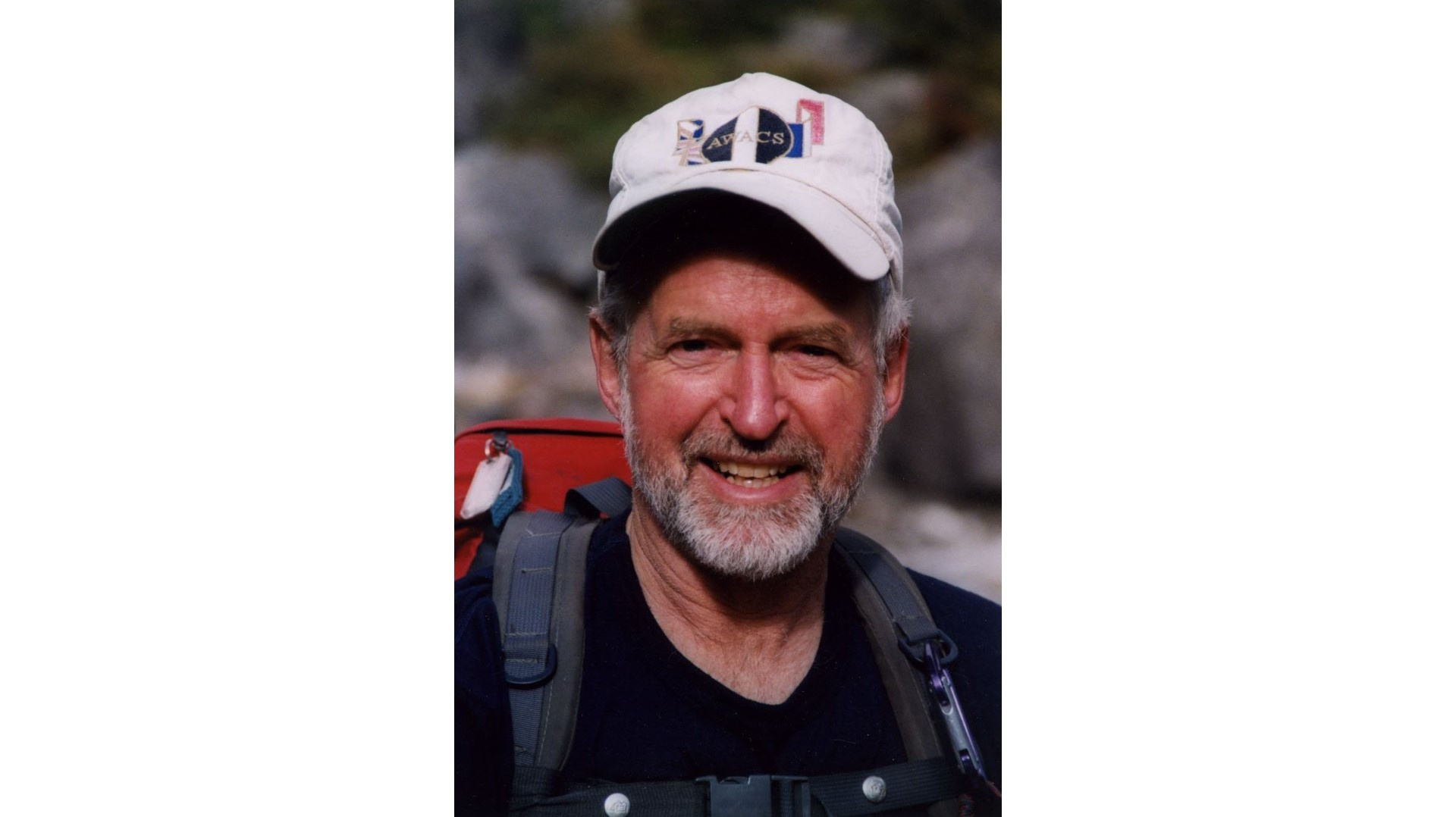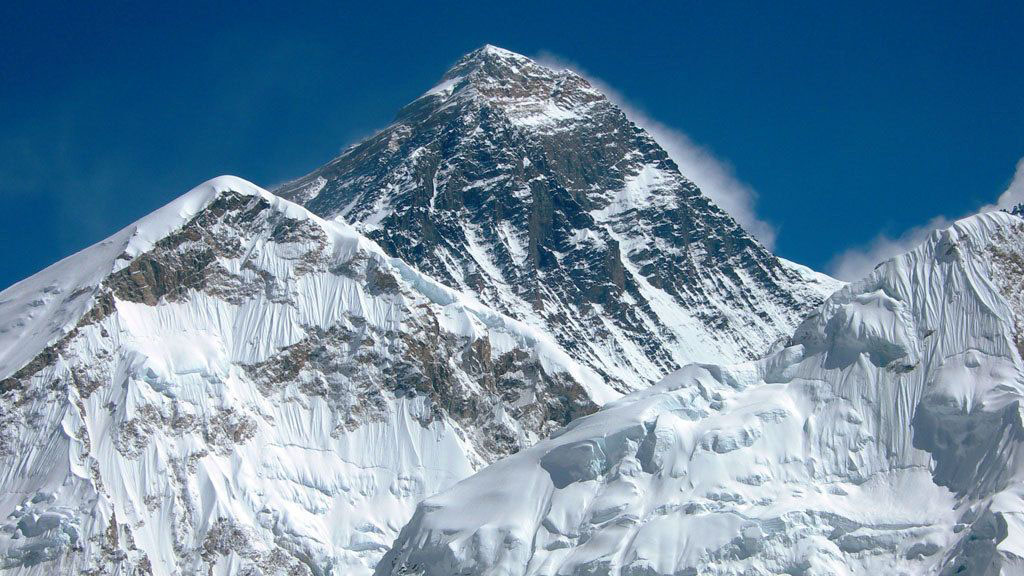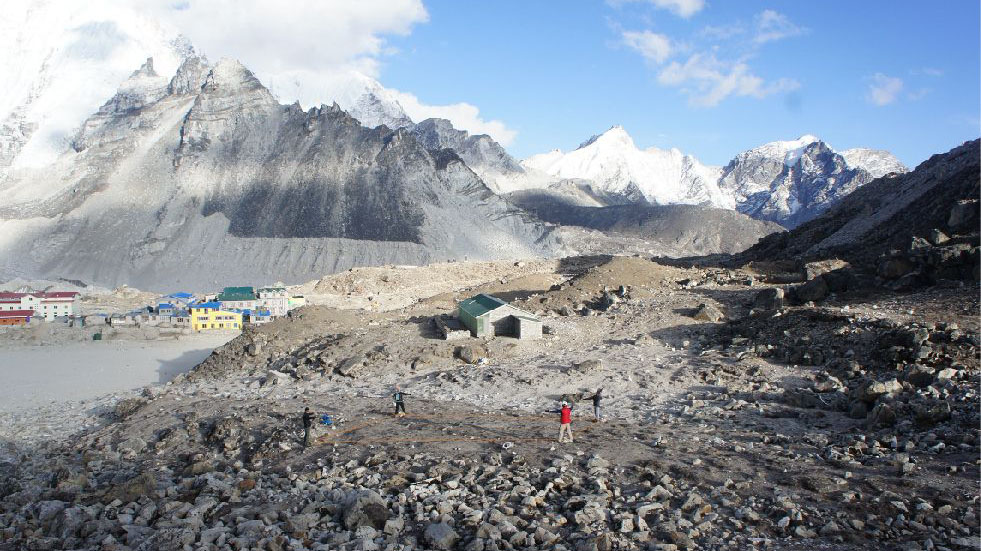The tallest mountain on earth has a poop problem, but a South Kitsap man is part of a team that might have found a solution.
More than 4,500 people have reached the top of Mount Everest since it was first summited in 1953, and each one has, at some point, had to use the bathroom.
For climbers, that means doing your business in a hole in the ground, or sometimes right outside a tent. Frozen human waste litters the mountain from base camp upwards, and no one knows what to do with it.
“It's the climbers' waste, they generated it, but neither they nor the Nepalese people know what to do with it, because there's no practical solution for it,” said Garry Porter, an Olalla resident and co-founder of the Mount Everest Biogas Project.
At the Everest Base Camp in Nepal, where climbers acclimatize and prepare for their summit bids, climbers go to the bathroom in large blue barrels with toilet seats. Porters haul the barrels down to the village of Gorak Shep and dump them into unlined pits.
The waste — which takes years to decompose because of the cold temperatures and high altitude — risks contaminating the water source for villages below. In 2015, the president of Nepal's mountaineering association said the growing waste problem threatened climbers' health.

That's why for the last seven years, Porter has been part of a team trying to figure out how to recycle the nearly 26,000 pounds of poop generated at Base Camp every year — and they may finally have a solution.
Porter has lived in Olalla since the 1960s. He caught the mountaineering bug after climbing Rainier with his son, and has climbed peaks in Alaska, South America and the Himalayas. He barely missed summiting Everest in 2003, but the mountain's human waste problem stuck with him.
“The whole trip was fantastic beyond belief, but we've left something here,” he said.
The idea hinges on turning human feces on Everest into biogas, a fuel produced when organic material decomposes without oxygen. Byproducts of the process include methane, which could be used for cooking, and an effluent that works well as a fertilizer.
But putting a biogas “digester” at Base Camp has several challenges. The container needs to stay between 70 to 80 degrees so the microorganisms inside can break down the feces. Hauling the necessary supplies to elevation is difficult and expensive, and the design would need to be built by local workers with supplies available in Nepal. Even the contents of the digester pose a problem — human feces aren't as ideal as animal or plant waste at producing methane.
“The question is simple: could we take that technology existing at warm, low elevation and move it all the way up to 17,000 feet?” Porter said.

The team's final design is essentially a buried container heated by solar panels. A battery stores the energy from the solar panels to keep it running at night, while an insulated shed protects everything from the elements. The whole project can be built using “off-the-shelf, low-risk, low-tech,” materials, Porter said.
In addition to providing a place to recycle the human waste on the mountain, the setup provides long-term employment for locals in Gorak Shep, as well as methane gas for cooking and fertilizer.
“If this works and can be made for a reasonable price, all of a sudden you might have a composting toilet that now provides a village with gas,” said Brent Bishop, a Seattle-area mountaineer who has written about the problem of human waste on Everest.
Bishop has summited Everest twice, and ran a program in the late 1990s to clean trash off the mountain. If the biogas project succeeds, it could spread to other high-altitude communities — many of which don't get the same number of climbers or tourism dollars as Everest.
A project that creates jobs for locals will also help it succeed in an area where the environment has taken a backseat to tourism.
“If they can make it work at Everest Base Camp, it'll be applicable all over the Himalayas,” Bishop said.
In October, the Mount Everest Biogas Project won the Mountain Protection Award from the UIAA, a prestigious international climbing group. While the accompanying grant was small, Porter hopes the recognition will help draw other investors. With enough support, construction on a prototype in Nepal could start this year.
“Many, many people on the team have been working on this project for seven years, so to see the project get recognized, even though I've only been on the team for a year, was really amazing,” said Tana Rill, another South Kitsap native who wrote the grant proposal.
The team is still talking with Nepalese manufacturers to determine the total price of the prototype, but the first one won't be cheap, Porter said. Another challenge is getting to the point where locals can build and operate the digester on their own.
“I mean this thing's going to go on forever — the generation of poop — so the digester's going to go on forever,” Porter said. “The digester has to be fed every day, so you're going to be paying someone to operate the digester after the engineers like me leave town.”


